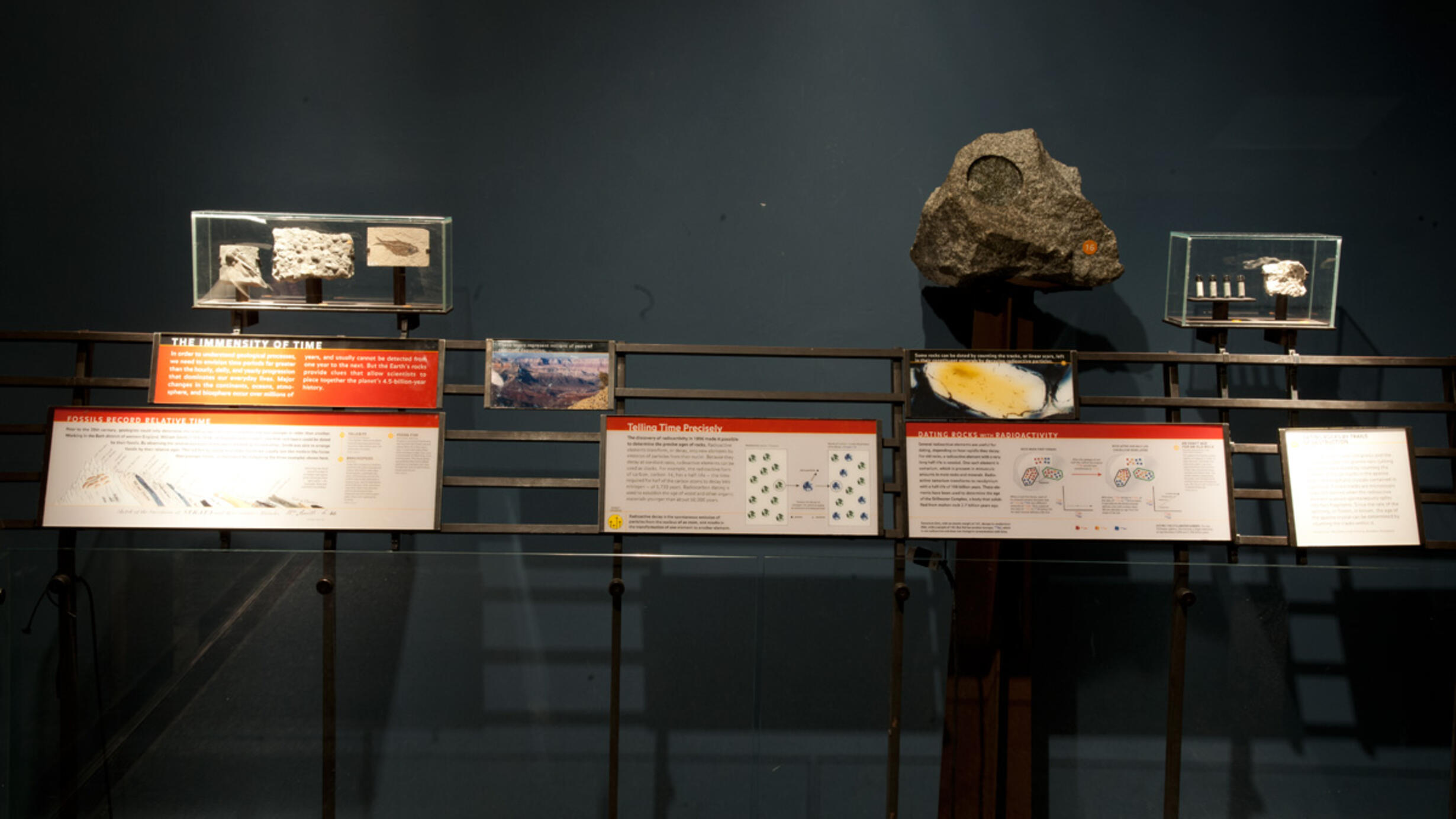Dating Rocks
Part of Hall of Planet Earth.

The Immensity of Time
In order to understand geological processes, we need to envision time periods far greater than the hourly, daily, and yearly progression that dominates our everyday lives. Major changes in the continents, oceans, atmosphere, and biosphere occur over millions of years, and usually cannot be detected from one year to the next. But the Earth’s rocks provide clues that allow scientists to piece together the planet’s 4.5-billion-year history.
Fossils Record Relative Time
Prior to the 20th century, geologists could only determine the relative ages of rocks — whether one was younger or older than another. Working in the Bath district of western England, William Smith (1769–1834), an engineer and surveyor, saw that rock layers could be dated.
In This Section
Exhibit
Trilobite
This Middle Cambrian trilobite fossil (Paradoxides tessini) was found in a 540-million-year-old carbonate-rich shale.
Exhibit
Brachiopods
Herbertella insculpta is a brachiopod from the Ordovician period (438 to 505 million years ago).
Exhibit
Telling time precisely
The discovery of radioactivity in 1896 made it possible to determine the precise ages of rocks.
Exhibit
Fossil fish
Knightia is an extinct freshwater herring from Eocene freshwater herring from the Eocene period (about 40-55 million years ago).
Exhibit
Dating rocks with radioactivity
Several radioactive elements are useful for dating, depending on how rapidly they decay.